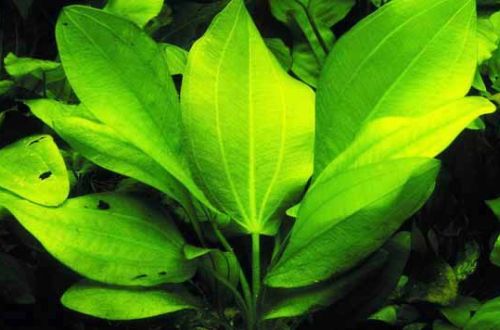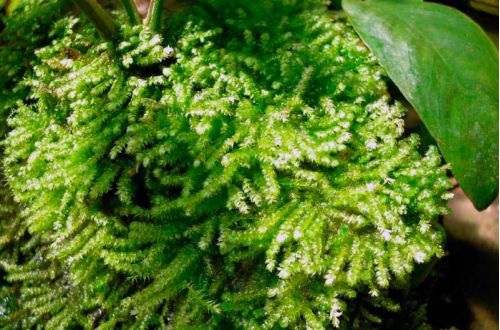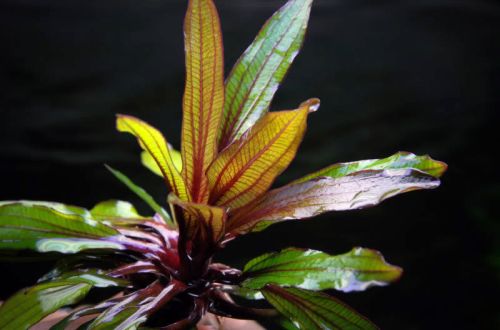
Echinodorus cordifolia
Echinodorus cordifolius, scientific name Echinodorus cordifolius. Widely distributed from South America to the United States, growing in swamps, ponds, shallow floodplain lakes. Depending on the specific region of origin and growing conditions, the shape of the leaves of this plant varies greatly. Such variability has led to the fact that a number of authors divide this species into several independent species, while others distinguish them into subspecies.

The classic Echinodorus heartifolia is considered to be a species found in reservoirs in the southern states of the United States. The plant has large green heart-shaped oval leaf blades on long petioles with seven pronounced veins. The edge of old leaves is slightly wavy. The plant reaches a height of 30–50 cm, and a width of 20 to 40 cm. Other varieties are noticeably smaller and differ in the oval shape of the leaves. As noted above, they may have other names. In this case, the German classification is used and these plants are called Echinodorus cordifolius “Ovalis”.
It is worth noting that many echinodorus (including hybrids) have a similar shape of leaf blades, so Echinodorus cordifolius is more likely to be used as a trademark in the sale, combining many varieties. They all need similar conditions to grow, so it doesn’t really matter what they are called.
It is one of the unpretentious aquarium plants, although it can also grow successfully in paludariums above water or in gardens along the pond during the warm season. Due to its size, it is desirable to plant only in large tanks of at least 200 liters. It does not impose high requirements on the composition of the soil and perfectly adapts to a wide range of temperatures and hydrochemical values.





